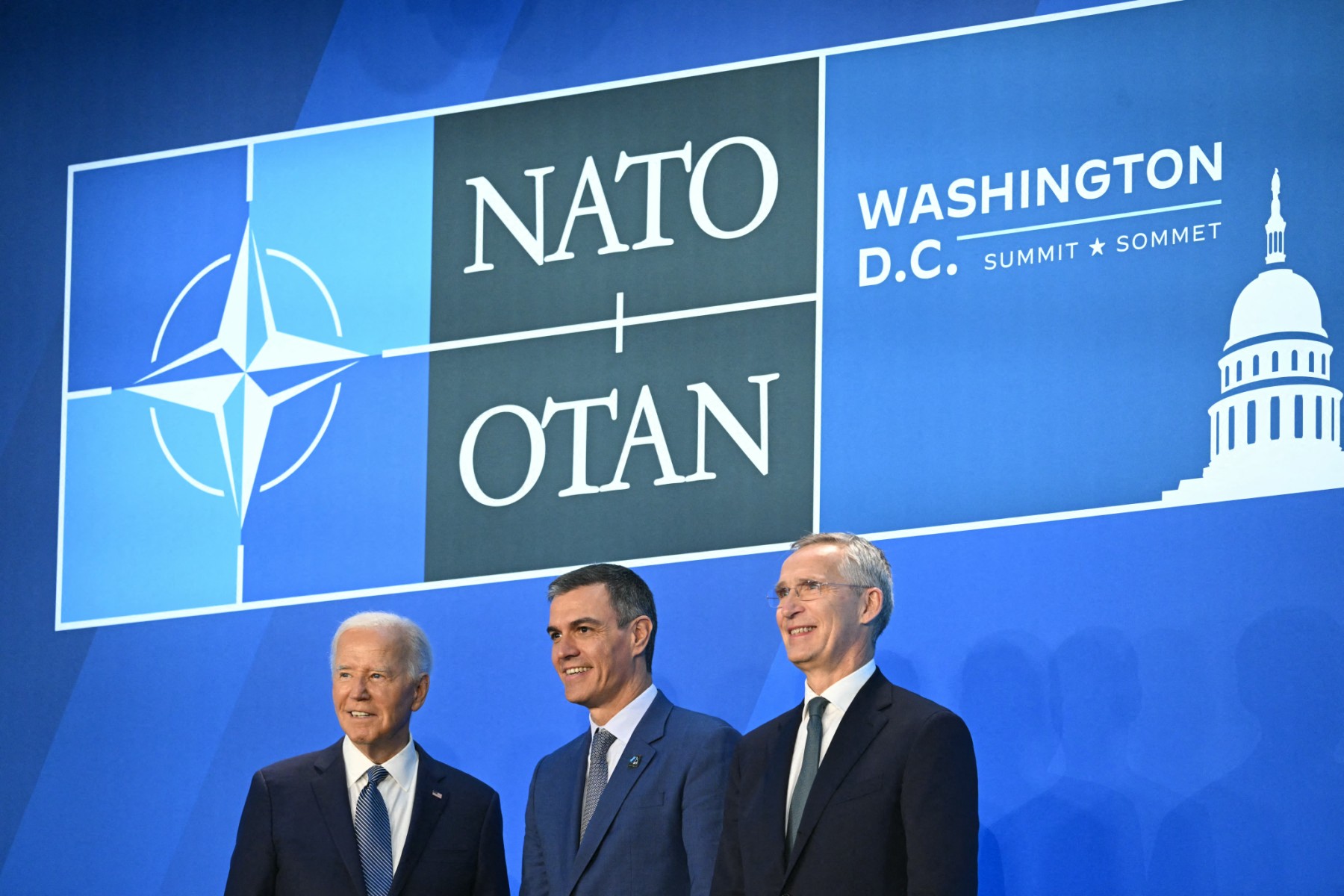[ad_1]
In mid -January, the newly elected US President Donald Trump replied, “Spain’s contribution is very low,” as Spain, like Spain, responded that Spain’s contribution was “very low.” Falsely refers to Spain as a BRICS country.
During the first term in office, the Republican leader criticized the European NATO countries for failing to achieve two percent of GDP, but most recently, in their GDP, he demanded that countries increase their costs to a further five percent.
Trump has indiscriminately embarrassed European allies with direct negotiations with Russia to end the war in Ukraine, and the leaders of the major European powers gathered in France to spend the budget and spend the budget and spend the budget.
Read: Europe’s security is in a ‘turning point’, the EU leader warns
In July 2024, the Financial Times are a Article The European Union’s fourth largest economy, entitled “Why Spain is back in NATO’s security expenditures,” explained why the military contributes to the military than any other NATO partner in its GDP. “
Not just FT, but after all, it is less than any other NATO country that spends 1.28 percent of Spain’s GDP for security.
But is it really worthy of isolation for the Spanish global platform for militarily pulling its weight?
For reference, Poland is the only European country that comes somewhere to spend five percent of its GDP for security.
By 2023, nine countries spent five percent or more of GDP for security in the entire world. This includes Algeria, Armenia, Israel, Lebanon, Oman, Russia, Saudi Arabia and South Sudan. Most of these were still or in war.
Although 72 percent of NATO allies were predicted to reach a two per cent target for security expenditures last year, a total of eight countries spent less in their military budget. One of these is Spain, Slovenia, Luxembourg, Belgium, Canada, Italy, Portugal and Croatia.
Read: Spain says ‘very soon’ is ‘very soon’ talking about sending troops to Ukraine
Advertisement
Responding to Trump’s January comments, Prime Minister Point Sanchez defended Spain’s efforts: “Over the last 10 years, we have increased our total security costs by 70 percent. If we take those figures in full words, what we can say is that Spain is the 10th best contributor to NATO ”.
When it comes to the entire NATO budget, Spain is one of the top 10 contributors, in fact the seventh place, contributes to 5.8 percent of the total budget behind Canada.
In fact, a Report The Rand Global Studies Center, appointed by President Trump, states that it must be measured not only by the expenses of the joint security countries but also by their true abilities. This new size puts Spain in a better position than the last place.
It is this system that they call “the load sharing code”, and what the specific requirements should be asked, and from which country to know from which country.

Spain’s Prime Minister Point Pedro Sanchez (C) is now welcomed by former US President Joe Biden (L) and NATO general secretary Jens Stoltenberg for the NATO 75th anniversary convention in Washington in July 2024. (Saul Lob / AFP Photo)
The percentage of each partner is calculated by comparing the total burden of joint security with the total burden.
The system provides sophisticated and accurate image than the current measuring bar, which focuses only on military expenses as percentage of GDP.
Advertisement
It may seem unnecessarily complicated and confusing, but it is not really. Rand researcher Charles King Mallori explained the organization by providing the example of a country, and spent 1.9 percent of its GDP maintains to maintain old equipment and pay pensions to retired military personnel, but a well -trained military, modern equipment and a sophisticated military drone industry.
The first country spends more than two percent, but the second country uses its resources more efficiently, so it does not always be who spends more money.
This new -scale Spain puts one of the top five countries that contribute to NATO.
According to this index, Spain contributes 3.03 percent to NATO, which is measured in economic burden.
Read: Where are the US military bases in Spain and why are they?
Advertisement
For example, Germany contributes a higher percentage of its GDP to security than Spain, but it allocates a higher percentage of its budget for administrative costs. On the other hand, Spain’s costs are mainly focusing on war capabilities – according to Mallori, 70 percent.
In spite of all this, Spain plans to raise its military spending in the coming years, followed by all the pressures from the US and other NATO members, but primarily the maintenance of their own safety as a result of the latest awareness call for them to take.
According to Spain’s leading national daily El Pass, those who have approached the draft bill at an increased military cost of Spain, will rise to the safety of 1.32 in its GDP this year, which will rise from two percent of the year in 2029.
In five years, Spain’s security budget is from 17.5 billion to $ 36.56 billion, which is more than twice.
[ad_2]
Source link













